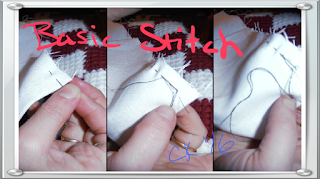The smell of fresh baked bread is enough to awaken the
senses. Bread bakers around the world create the mystical scent that seems to
waft around like one of those cartoons where the sent runs right up under your
nose and you seem to drift towards it finding it, buying it, eating it and then
wishing you hadn’t eaten it so quickly. I thought I would share with you one of
the bread recipes I use. I have altered it slightly from the one you find in
Mother Earth News adding a slightly different mixture of flour.
Hands on time: Prep 5, let sit overnight (12 -18 hrs) bake
45 mins.
You will need a large bowl and either a Dutch Oven or a
Pizza stone
Ingredients:
¼ tsp of active dry yeast
1 ½ C. Warm water (about blood temp) (put your finger under
the water and the water should feel no colder and no warmer than your finger.)
1 ½ C. All-purpose flour (plus extra for dusting
1 ¼ C. Whole Wheat Flour
¼ C. of Rye Flour
1 ½ tsp salt
Step 1: In large bowl mix the yeast and water. Add flour and
salt stirring until well blend and is sticky with a shaggy appearance. Cover
bowl with plastic wrap and let sit for at least 8 hours at warm room temp.
Around 70 degrees. If like me you keep your home cooler you should let it sit
longer.
Step 2. I tend to do my first fold in the bowl because it is
rather sticky. Lay a dusting of flour on the top and pulling up on the sides
fold it over the top. Repeat on each side and recover, letting sit for 15
minutes- hour. The second fold dust a work surface with flour and spread thinly
the dough over your surface. Once it spread out fold into thirds like you would
a comforter. Return to bowl and let sit again. Fold again 1 to 2 more times
until the dough doesn’t tear when you spread it out and sort of springs back
into itself.
Step 3. Using just enough flour to keep the dough from
sticking to your work surface or hands gently but firmly fold the bottom into
the top creating a crease on the top. Turn it over and shape it into a ball.
Keep the bottom of the bread on the surface to twist out the seam you created.
In a bowl have a clean dish towel coated with flour, wheat bran or cornmeal
ready and place your bread inside and cover it for another 1 or 2 hours. When
it is ready, the dough will have doubled in size.
Step 4: Preheat the oven to 475 with a 6-8 inch quart Dutch
oven or pizza stone before bread is ready (10-30 minutes depending on your
oven). When dough is ready carefully place your dough in your pot or on your
stone by flipping it carefully out of the cloth. If it loses a bit of shape
when you do this that is alright. With a sharp knife make a few cuts in the top
so it spreads out more evenly.
 |
| I do it at 480 because my oven heats a little low. |
Step 5: If you are doing it in a Dutch oven cover and bake
for 30 minutes. Remove lid and bake another 15-20 minutes until the dough is a
nice brown. If on the stone bake for 20-30. Remove from the pot or stone and
tap the bottom if it sounds hollow it is done. Place on a rack for at least an
hour before enjoying.
 |
I enjoyed mine with a nice bowl of beef Stew. Makes great grilled cheese too.
Pottery from Plimoth Plantation Potters
Pizza stone mentioned in blog A bakers gonna bake February 10, 2015 |
















